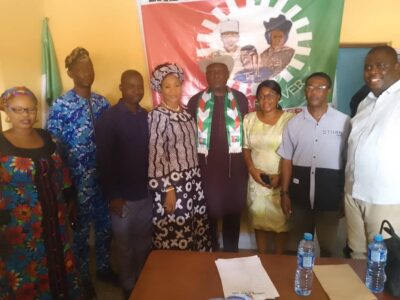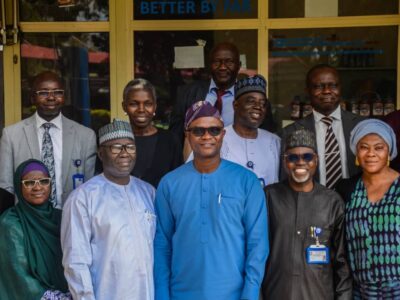The Nigeria Hydrological Services Agency has warned that 1,249 communities across 176 Local Government Areas in 33 states and the FCT fall within the high flood-risk areas in 2025.
The warning was issued during the official presentation of the 2025 Annual Flood Outlook (AFO) by the Minister of Water Resources and Sanitation, Prof. Joseph Utsev, in Abuja.
According to the forecast, an additional 2,187 communities in 293 LGAs across 31 states and the FCT are expected to experience moderate flood risk this year.
States identified in the high-risk category include Abia, Adamawa, Akwa Ibom, Anambra, Bauchi, Bayelsa, Benue, Borno, Cross River, Delta, Ebonyi, Edo, the FCT, Gombe and Imo states.
Others are Jigawa, Kebbi, Kogi, Kwara, Lagos, Nasarawa, Niger, Ogun, Ondo, Osun, Oyo, Rivers, Sokoto, Taraba, Yobe, and Zamfara states.
Mr Utsev noted that floods were among the most devastating natural disasters affecting lives, property, agriculture, and infrastructure.
He said that the 2025 forecast was aimed at raising awareness and encouraging preparedness among citizens, particularly in vulnerable communities.
He said that this year’s theme on community preparedness and adaptation was timely, given the recurring floods and their impact on livelihoods and infrastructure.
The minister explained that the 2025 Annual Flood Outlook had been segmented into three parts to enhance flood preparedness.
These include a general flood forecast, a communication strategy for effective warning dissemination, and a mitigation plan to reduce exposure and vulnerability.
He added, “According to the forecast, 657 communities in 52 LGAs are expected to experience high flood risk between April and June. 544 communities in 142 LGAs between July and September; and 484 communities in 56 LGAs from October to November. Moderate flood risk is projected for 445 communities in 116 LGAs from April to June, 1,458 communities in 271 LGAs from July to September, and 1,473 communities in 171 LGAs between October and November.’’
He said flash and urban flooding were expected in major cities, including Abuja, Lagos, Port Harcourt, Ibadan, Kano, and Makurdi, largely due to poor drainage and weak infrastructure.
According to him, coastal states such as Bayelsa, Cross River, Delta, Lagos, Ogun, Rivers, and Ondo states may also experience flooding caused by rising sea levels and tidal surges, posing a threat to livelihoods and river-based activities.
Mr Utsev announced initiatives such as a National Flood Insurance Programme, to be piloted in Kogi and Jigawa states, and the Niger Flood Project to boost river navigation, flood control, and climate resilience.
He highlighted plans to launch an Integrated Climate Resilience Project and the forthcoming Annual Drought Outlook.
Mr Utsev urged stakeholders to support government efforts in building flood-resilient communities and affirming the Federal Government’s commitment to proactive flood management.
Earlier, the NIHSA Director-General, Umar Mohammed, emphasised the agency’s commitment to using advanced technologies and fostering inter-agency collaboration to deliver accurate and timely flood forecasts.
Mr Mohammed explained that this year’s forecast adopted a more community-focused approach, extending beyond local government areas to identify specific at-risk communities.
He stated, “Our aim is to equip decision-makers with actionable information to protect lives, livelihoods, and property.’’
He added that the outlook identified flood-prone states, local government areas, and communities, while also assessing impacts on sectors such as healthcare, education, agriculture, transport, and water quality










Comments